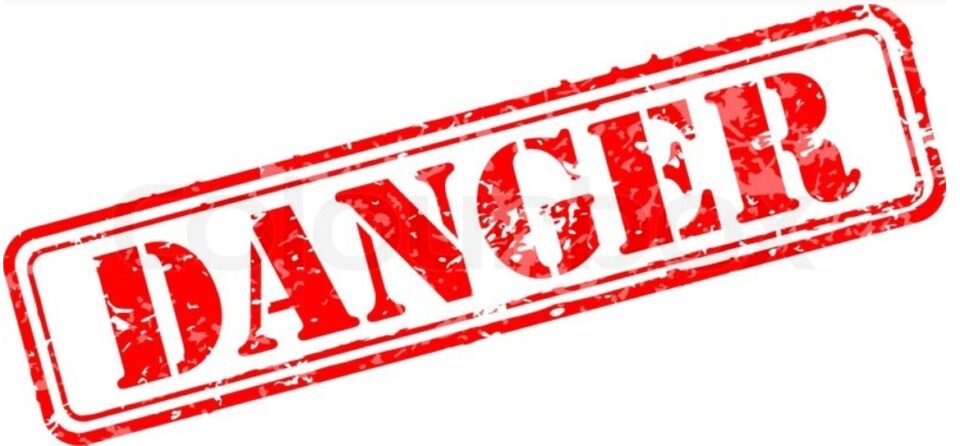Trade Findings and Adjustments 10-06-2020
How options and option spreads are Dangerous
OK let’s go over this new risk involved with credit spreads
409/410 Bull Put spread rights and obligations for $0.14
409 Long put = The right to sell a stock at a certain price for a certain period of time
410 Short Put = The obligation to buy a stock at a certain price for a certain period of time
What is the risk in the trade?
You have to buy stock at $410 a share to then turn around and sell it for $409 = LOSE $1
BUT the REAL RISK is at options expiration because after hours the stock price can fall and you then have a long options that will show that it has expired and a short option that you have to fulfill the obligation without the down side protection
AT expiration it is a double edge sword where the long is expired and the short is still in play after the market close
What happens is after hours TSLA could fall $62
The Clearing House requests fulfillment 1.5 hours or more after options expiration on Friday and the Brokerage has to find accounts to fulfill those orders.
The PROBLEM is that the long side shows an expiration and the computer is to F-ing stupid to see the spread that was in place. IN FACT the orders are viewed at expiration as separate orders
Where is the fiduciary responsibility of the brokerage house?
MY belief is that within the computer program the first accounts to look at are the smallest
Because they generate the smallest amount of trading commissions
What does this mean for a bear call?
410/409
$410 is the right to buy a stock for a certain price for a certain period of time
$409 is the obligation to sell a stock at a certain price for a certain period of time
SO if a stock price takes off you could be obligated to sell a stock at $409 and have to go out in time and buy it at maybe $500
Margin requirements on the account are null and void
As I spoke with FINRA for a bull put to avoid this after hours “ SO my clients have to go exercise a long put, right to sell, stock they DON’T own (naked short) in hopes that they cover the short put buying stock obligation”?
The answer was “yes that is one way to protect the account.”
EVERYONE who has told you “ I get paid to play, the biggest winners receive credit into their account, most profitable option traders sell options “ ALL COMPLETEY B.S.
BUT the real solution is to exit the trade before options expiration even if you are going to lose a couple of cents and create another trading commission for the brokerage house.
On 08/28/2020 I entered into a Tesla (TSLA) Bull Put Credit Spread on Robinhood.com. Only (2) contracts were filled for a credit of $280 to me, expiring on 09/04/2020 with collateral of $1000 held from my account.
$1.40 credit on a $5 spread
On 8/31/2020, TSLA split 5 for 1 and I then had (10) $410/$409 contracts.
You now have $0.28 credit for $1 of risk
On 09/01/2020, TSLA traded up to $502 and the Spread I purchased went down to $0.00.
I tried 11 times to sell the spread from 09/01/202 – 09/04/2020, but was never filled.
What was the mistake? FIRST I would have $0.02 debit HAVE to make it worthwhile for the market maker
THEN IF I wasn’t getting filled close the short put leg. WHY? That is your obligation
On 09/04/2020, expiration day, TSLA traded between $372 & $428 and closed at $418.32.
MY Robinhood account reflected pending expiration transactions for the 2 legs of the Spread trade.
$8.32 ITM and I thought I won the trade.
On Credit Spreads, After market hours, a clearing house can send in short orders to your broker and have them filled.
What happened to your position:
On September 4, 2020, TSLA closed during regular market hours at $418.32. At this time the options you held were out-of -the-money. Later that day during post-market hours the price of TSLA moved, which may have made part or all of the short side of your options position to be in-the-money.
Overnight on Friday, September 4th, after market close, we were informed by the Options Clearing Corporation (OCC) that your short TSLA put position did not expire worthless as expected based upon the price of TSLA at market close, but had been assigned. In addition, the OCC did not automatically exercise your long put position because it was out-of-the-money at market close, and the OCC determines whether to automatically exercise options contracts based upon the closing price. By the time we received notification from the OCC that your short put position was assigned, it was past the cut-off to submit an exercise request on your long put position. We are required to submit exercise requests by 5:30 PM ET.
At market open on Tuesday, September 8th, due to the short put assignment, your account was long shares of TSLA, and you didn’t have enough buying power in your account to support the purchase of these shares. As a result, the position was closed.
A note about expiration risk:
Holding a spread through expiration exposes you to market risk. Particularly when the underlying stock moves after the market closes. Spread trades consist of two option contracts that are completely independent of each other. When you sell an option contract you are obligated to fulfill that contract. Please note that a contract being assigned is not controlled by Robinhood.
Please reply to this email with any outstanding questions.
TSLA opened up at $356.00 on Tuesday 9/8 and he was filled with a margin call at that price for 600 shares
He now owes 31K to Robinhood Brokerage

HI Financial Services Mid-Week 04-29-2014